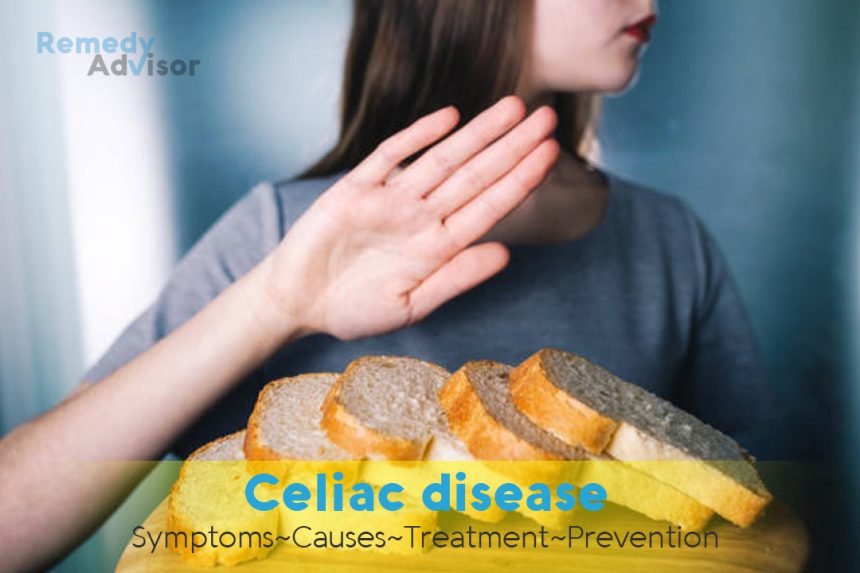What is it
Celiac (pronounced see-lee-yak) disease, sometimes called celiac sprue, is a chronic toxic reaction in the small intestine that’s triggered by gluten, a protein found in wheat and wheat products, rye, oats, and barley. The intestine can’t break down the gluten, and undigested gluten irritates the intestinal lining, which causes malabsorption: water and essential nutrients aren’t absorbed by the intestine the way they should be.
The ailment usually surfaces during infancy or early childhood, shortly after the child begins eating food with gluten. Once a child reaches adulthood, he or she may be able to tolerate gluten. Adults will rarely develop celiac disease, but people as old as 60 can get it.
Celiac disease affects approximately 1 in 3,000 people. The disease primarily affects whites of northwestern European heritage and rarely affects blacks, Asians, or Jews. Twice as many females develop it as men.
Symptoms
- Diarrhea that may be chronic or intermittent, pale and foul-smelling.
- Loss of appetite; weight loss.
- Fatigue.
- Flatulence.
- In infants: Gastrointestinal distress after starting to eat cereal.
- In infants and children: Failure to gain weight or grow taller.
What causes it
The exact cause of celiac disease is unknown. The disease appears to run in families, so it probably has a genetic component, but how it is passed on hasn’t been determined.
What if you do nothing
Celiac disease is difficult to diagnose but relatively easy to treat, and so should not be ignored. Untreated celiac disease can lead to malabsorption of necessary nutrients, weight loss, fatigue, and retarded growth. People with celiac disease who continue to eat gluten are 10 to 15 percent more likely to develop intestinal cancer.
Home remedies
Treatment for children and adults is the same. After a diagnosis from a gastroenterologist, the following measures will restore normal absorption and bowel function within a few months.
Go gluten-free
This means absolutely avoiding any foods made with wheat, barley, rye, or oats. You will feel better in two to four weeks, and be symptom-free within a year
Be careful of hidden gluten
Even small amounts of gluten can cause an adverse reaction, so you need to be aware of products that contain hidden sources of gluten. These range from some soy sauces and vinegars to the backing on postage stamps and even the flour used on chewing gum (which keeps it from sticking to the wrapper). Wheat flour is also used in hundreds of prepared foods, but its presence may not always be indicated on a food label. Information on these foods can be obtained from celiac sprue organizations and books on gluten free diets. A good dietician can also be helpful.
Buy gluten-free products
This may add time to your weekly shopping at first, but you will quickly learn what you can and cannot eat. Specialty mail-order companies have a wide variety of gluten-free products, including those made with safe substitutes such as rice, com, and soy- bean flours.
Speak up
When eating out or traveling by plane, tell your waiter or steward about your special dietary needs.
Avoid foods you aren’t sure about
If you can’t be sure a food is gluten-free, don’t eat it.
Prevention
There is no way to prevent celiac disease. However, you can avoid celiac flare-ups by maintaining a gluten-free diet.







